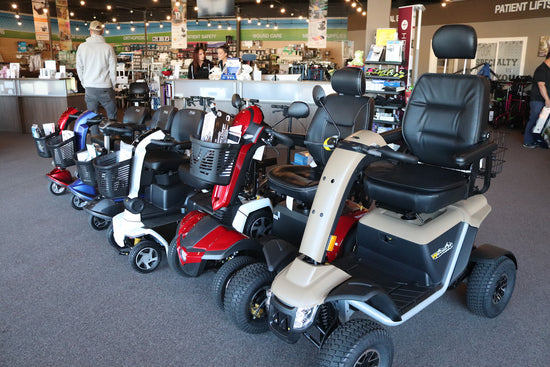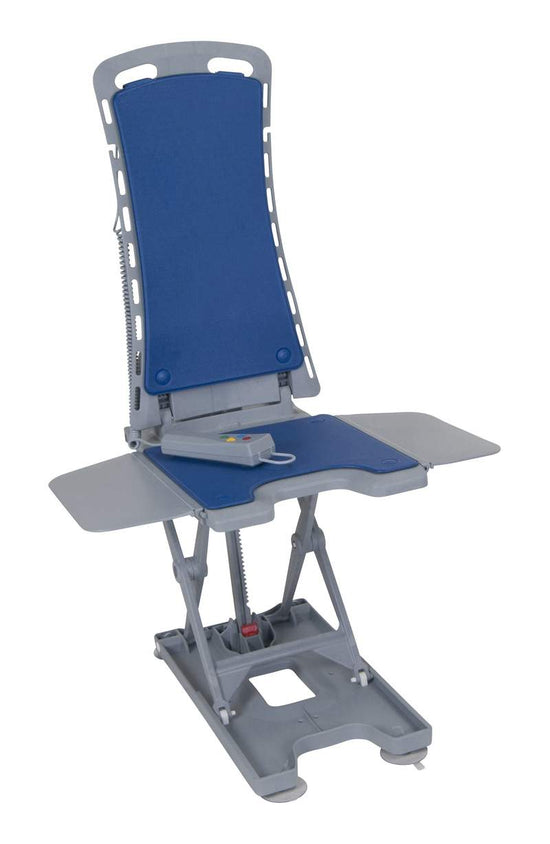In the evolving landscape of healthcare, the importance of reliable and effective medical equipment cannot be overstated. For caregivers and caretakers, whether in a professional setting or at home, understanding the role of medical equipment in patient care is essential. These tools are not only vital in delivering quality healthcare but also serve as the foundation for accurate diagnosis, timely treatment, and continuous patient monitoring.
From basic items like thermometers and blood pressure monitors to advanced machinery such as ventilators and infusion pumps, medical equipment helps caregivers provide safer, more efficient, and more compassionate care. This blog aims to explore how medical equipment supports patient well-being, enhances caregiving duties, and improves health outcomes.
Common Types of Medical Equipment Used in Home Care
For caregivers, especially those providing long-term or chronic care at home, understanding the variety of medical equipment available is critical. Common devices play a significant role in day-to-day caregiving and support a wide range of patient needs.
Here are some of the most frequently used types of medical equipment in home care:
-
Mobility aids: Wheelchairs, walkers, and canes help patients move around safely and with greater independence.
-
Monitoring devices: Blood pressure monitors, glucometers, pulse oximeters, and thermometers allow caregivers to track vital signs and detect changes in health status early.
-
Respiratory equipment: Oxygen concentrators and nebulizers assist patients with breathing difficulties, such as those suffering from COPD or asthma.
-
Hospital beds and support surfaces: Adjustable beds and pressure-relieving mattresses improve comfort and reduce the risk of bedsores.
-
Infusion pumps and feeding tubes: These tools deliver medication and nutrition to patients who cannot ingest them orally.
-
Personal care aids: Items like commodes, shower chairs, and grab bars promote hygiene and help with daily living tasks.
Equipping a home with the right medical tools allows caregivers to deliver consistent, high-quality care while improving patient outcomes.
How Medical Equipment Enhances Safety and Comfort for Patients
Medical equipment not only facilitates clinical treatment but also plays a key role in improving patient safety and comfort. Caregivers are often tasked with preventing accidents, managing symptoms, and ensuring overall well-being. This is where the right equipment becomes indispensable.
Fall prevention is one of the most important aspects of caregiving. Devices like bed rails, non-slip mats, and walking aids reduce the risk of injury from falls. Properly used, these tools help maintain a patient’s mobility and confidence while minimizing the chances of accidents.
Comfort is another crucial factor. Pressure-relieving cushions, hospital beds with adjustable features, and ergonomic wheelchairs help manage pain and improve the patient’s quality of life. For patients with respiratory conditions, using oxygen therapy or CPAP machines can significantly improve sleep and breathing comfort.
Moreover, medical equipment supports consistency in care. Regular use of blood pressure monitors or glucose meters allows for early detection of potential problems, preventing complications and hospital visits. Ultimately, when caregivers use appropriate medical equipment, they not only increase physical comfort but also help patients feel secure, valued, and cared for in their environment.
The Caregiver’s Role in Managing and Maintaining Medical Equipment
Proper management of medical equipment is a responsibility that falls heavily on caregivers. Maintenance, storage, and operational oversight are all crucial aspects that directly impact the effectiveness and safety of the equipment.
Caregivers must be diligent in ensuring that devices are functioning properly. This involves routine checks for wear and tear, monitoring battery levels, and replacing consumables such as filters or sensors as needed. For instance, oxygen concentrators require regular cleaning of filters, and feeding tubes must be inspected for blockages or contamination.
Storage also plays a vital role. Equipment should be kept in clean, dry, and organized spaces to prevent damage or malfunction. Electrical devices should be checked for cord safety and plugged into secure, grounded outlets.
Another part of the caregiver’s role is ensuring the patient uses the equipment as prescribed. This includes reminding or assisting with proper usage, adjusting settings based on medical guidance, and recording data for healthcare providers when necessary.
When medical equipment is well-managed, it supports consistent, high-quality care. For caregivers, taking ownership of this responsibility empowers them to be more effective and ensures better outcomes for the patients under their care.
Cost and Accessibility Considerations for At-Home Medical Equipment
Affording and accessing medical equipment at home can be a significant challenge for many caregivers. Understanding the financial landscape and the resources available can make this process more manageable and less overwhelming.
First, it’s essential to determine whether the equipment is covered by insurance or government programs. Medicare, Medicaid, and private insurers often cover certain durable medical equipment (DME), provided there is a doctor’s prescription and proof of medical necessity. Knowing how to navigate these claims and paperwork is an invaluable skill for caregivers.
Rental options are another way to reduce upfront costs, especially for short-term needs. Many suppliers offer monthly rentals for hospital beds, oxygen tanks, or mobility aids, making it more affordable.
Here are some ways caregivers can reduce costs and improve access:
-
Explore second-hand options from reputable sources that inspect and sanitize equipment.
-
Use community health resources, such as nonprofit organizations or local health departments, which often lend or donate equipment.
-
Look for manufacturer discounts or financing plans for more expensive devices.
-
Join support networks where caregivers exchange or donate used items in good condition.
Balancing quality and affordability ensures that patients receive the necessary care without creating undue financial stress on the caregiver or family.
The Importance of Training and Education for Equipment Usage
For caregivers, having access to medical equipment is only part of the equation. Equally important is the knowledge and training to use it correctly. Misuse can not only render the equipment ineffective but can also lead to injuries or worsening of the patient's condition.
Training starts with understanding the function and limitations of each device. For instance, a caregiver using a mechanical lift must be fully aware of weight capacities and proper positioning techniques. Similarly, operating a CPAP machine involves adjusting mask fit and pressure settings accurately.
Many equipment suppliers offer basic instruction during delivery, but ongoing education is vital. This can come in the form of online tutorials, workshops, or caregiver certification programs. Caregivers should take the initiative to stay updated on best practices and any changes in the manufacturer’s guidelines.
Furthermore, education fosters confidence. When caregivers understand how and why a device works, they are more likely to use it consistently and effectively. This ultimately results in better monitoring, improved patient comfort, and fewer emergencies. Making training a routine part of caregiving ensures that medical equipment remains a helpful tool rather than a source of confusion or risk.
Emergency Preparedness with the Right Medical Equipment
Being prepared for emergencies is a key aspect of caregiving, and medical equipment plays a central role in that readiness. Whether dealing with power outages, natural disasters, or sudden changes in a patient’s condition, having the right tools on hand can make a critical difference.
Here are essential considerations for building an emergency-ready setup:
-
Backup power sources: For devices like oxygen concentrators or feeding pumps, have battery backups or portable alternatives ready.
-
Extra supplies: Keep a minimum of 7 days’ worth of consumables like tubing, filters, medications, and gloves.
-
Manual options: For electrically operated devices, identify non-electric substitutes or procedures in case of outages.
-
Contact lists: Maintain updated information for doctors, emergency services, and medical equipment suppliers.
-
Quick-access storage: Store emergency gear in an accessible, organized location known to all household members.
Caregivers should regularly review and practice emergency plans with the patient and others in the home. Being proactive and ensuring the availability and functionality of emergency medical equipment can not only save time but also save lives during critical moments.
Caring for a loved one or patient at home comes with many challenges, but having the right medical equipment can significantly improve safety, comfort, and overall care quality. From basic monitoring tools to emergency preparedness gear, every piece of equipment plays a vital role in enhancing daily caregiving efforts.
If you’re a caregiver looking for reliable, high-quality medical supplies in Redding, California, look no further than Everything Medical. They specialize in Home Medical Equipment and Supplies, offering a wide selection tailored to meet your unique caregiving needs. Visit Everything Medical today and take the first step toward safer, smarter home care.




